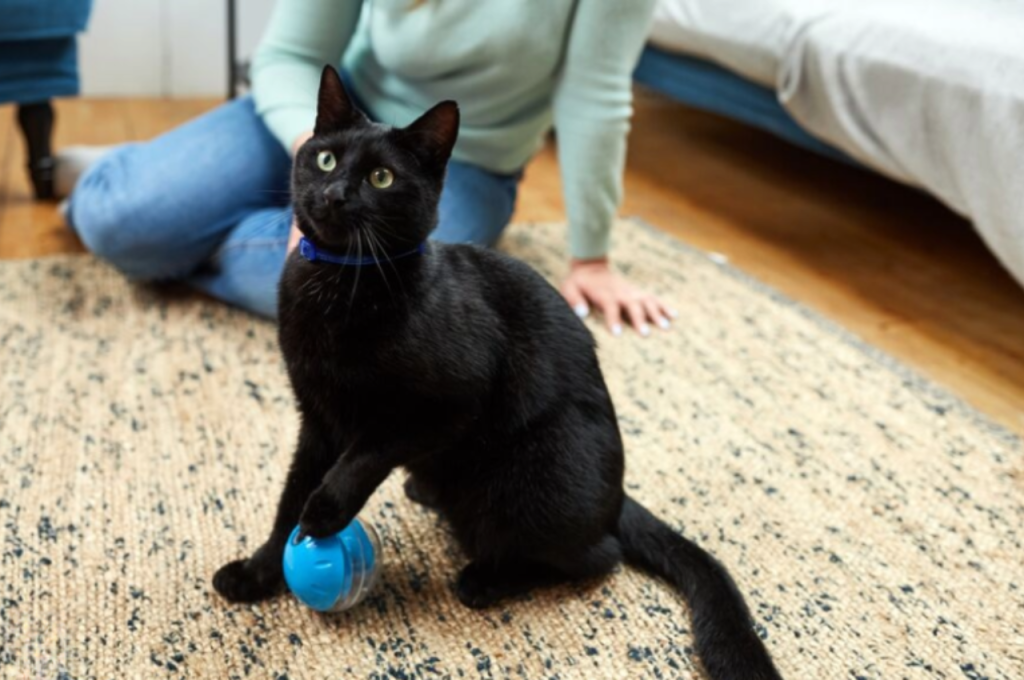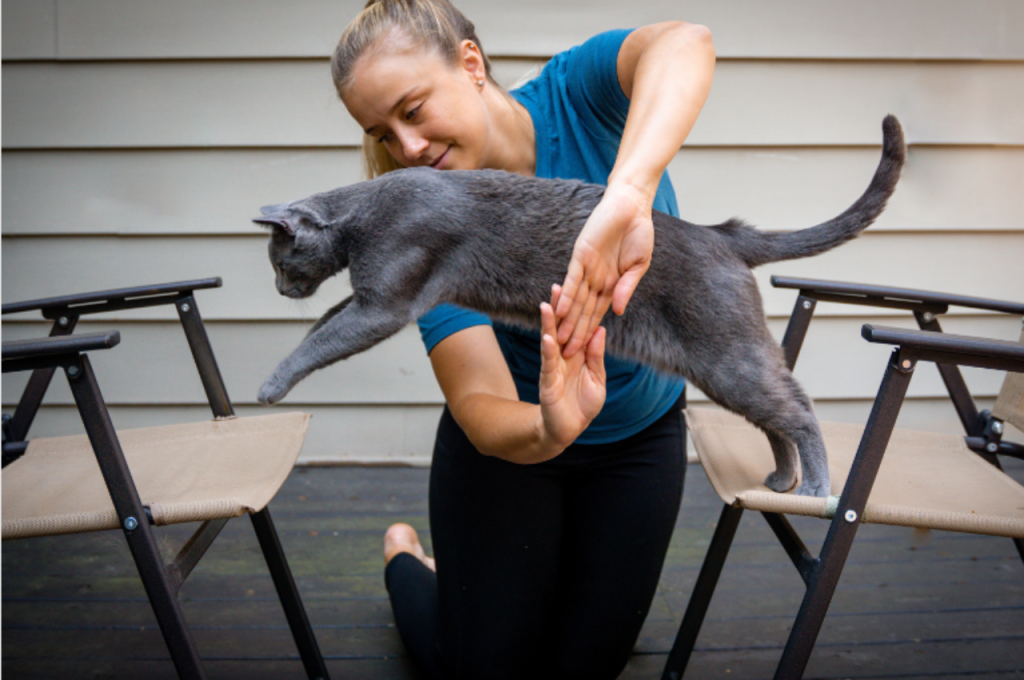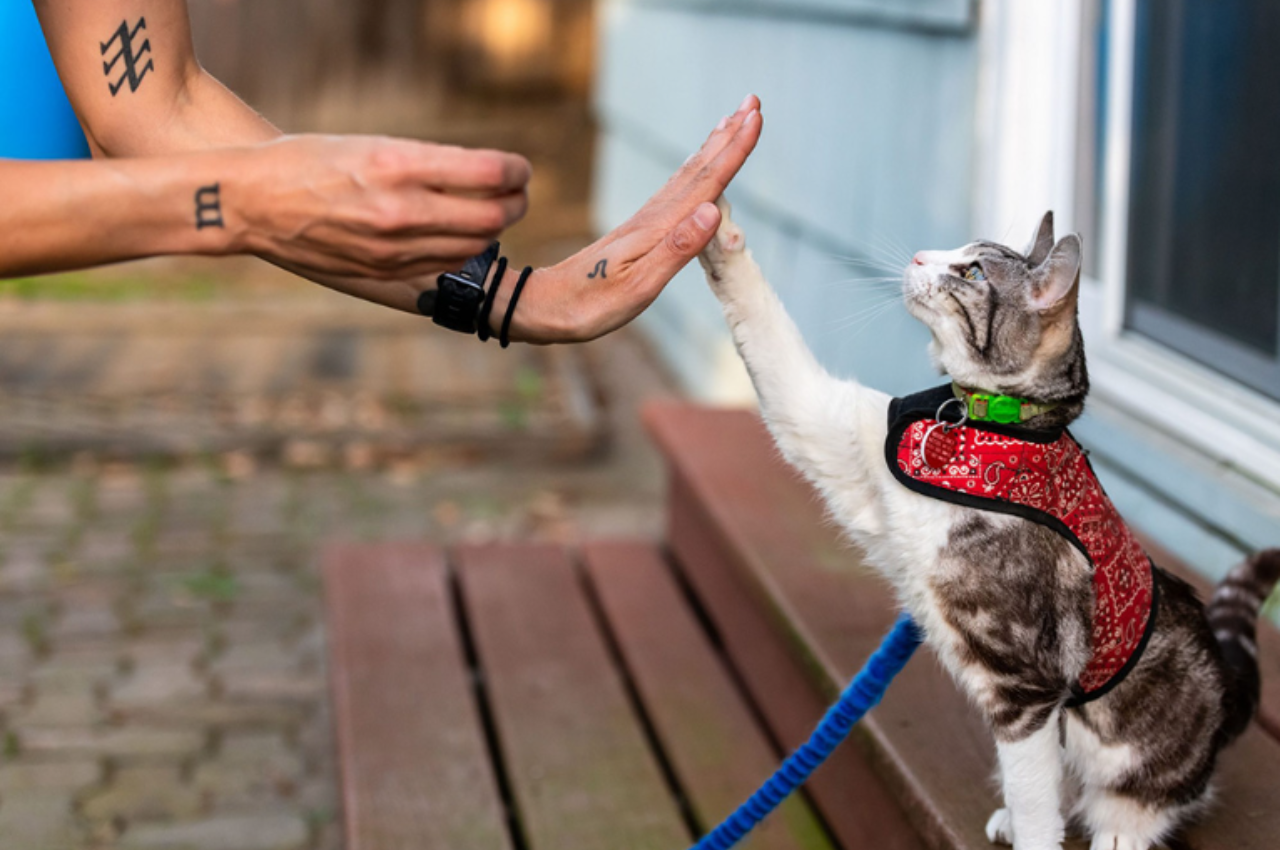Cat training tricks involve utilizing positive reinforcement and repetition. With consistent cues and rewards for desired behaviors, you can teach your feline companion various tricks, including sit, stay, shake paws, and proper litter box use.
Achieving success in cat training requires patience, consistency, and a deep understanding of your cat’s behavior and motivations. A well-trained cat not only enhances your home environment but also provides mental stimulation for herself.
In our guide, we’ll delve into effective techniques for training your cat, emphasizing positive reinforcement methods to establish clear communication with your furry friend. Mastering cat training tricks can foster a harmonious bond between you and your pet.
Understanding Your Cat’s Behavior
Discover effective cat training tricks by understanding your cat’s behavior. Learn how to communicate with your feline friend and use positive reinforcement to teach new behaviors. By understanding your cat’s natural feeling, you can tailor your training approach for a happier, more obedient pet.

Your cat’s behavior can sometimes be mysterious and unpredictable. Understanding why your furry friend acts the way they do can help you build a stronger bond and make training more effective. In this article, we will explore two key aspects of cat behavior: instinctual behavior and communication signals.
Natural Behavior
Cats have a rich ancestry that shapes their feeling and behaviors. These feeling often dictate how they interact with the world around them. Here are some common instinctual behaviors you may observe in your cat:
- Hunting: Cats have a natural instinct to hunt for prey, even if they’re well-fed. This behavior includes chasing, pouncing, and catching
- Scratching: Cats scratch to sharpen their claws and mark their territory. Providing them with appropriate scratching posts can help redirect this behavior
- Exploring: Cats are curious creatures and love to explore their environment. Whether it’s climbing to high places or investigating every nook and cranny, their natural feeling drive their need for exploration
Understanding these instinctual behaviors can help you create an environment that supports your cat’s natural tendencies while also preventing unwanted behaviors. For example, providing interactive toys can stimulate their hunting instinct and help redirect their energy away from destructive behaviors.
Communication Signals
Communication is a vital aspect of cat behavior. Cats use a variety of signals and cues to convey their emotions and intentions. Learning to recognize and interpret these signals can enhance your understanding of your cat. Here are some common communication signals your cat may display:
- Body Language: Pay attention to your cat’s body posture. An arched back and tail held high indicate they’re feeling confident and relaxed, while a flattened body and tucked tail may indicate fear or submission
- Vocalizations: Cats use different vocalizations to express themselves. From the familiar meow to purring, hissing, or growling, each vocalization carries a different meaning and emotion
- Eye Contact: Your cat’s eyes can also provide valuable communication cues. Dilated pupils may indicate excitement, while narrowed eyes can convey aggression or fear
By understanding your cat’s communication signals, you can better respond to their needs and create a more harmonious living environment. Remember to observe your cat’s behavior in different situations and contexts to gain a deeper understanding of their unique language.
Preparing Your Home for Training
Prepare your home environment for effective training by removing distractions, organizing supplies, and establishing a routine. Consistency and patience are key as you embark on this journey with your pet.
Creating A Safe Space
Creating a safe space for your pet is essential for their well-being and comfort. Consider factors like accessibility, comfort, and security when designing their area. Provide cozy bedding, toys, and ensure it’s free from hazards.
Ideal Training Tools
Ideal training tools facilitate effective communication and positive reinforcement between you and your pet. These may include clickers for precise signaling, treats as rewards, and training mats for designated areas. Choose tools that align with your training goals and your pet’s preferences.
Positive Reinforcement Training Methods
Positive Reinforcement Training Methods are an effective way to teach your cat new behaviors and tricks. These methods focus on rewarding desired actions to encourage your cat to repeat them.
Clicker Training
Use a clicker to make a distinct sound followed by a treat when your cat performs the desired behavior. This helps your cat associate the click with the reward, accelerating the learning process.
Treat-based Training
Offer your cat small treats as a reward for performing a trick correctly. Using treats as positive reinforcement can motivate your cat to learn and execute various tricks.
Teaching Basic Commands
Training your cat to follow basic commands is not only beneficial for their safety, but also for strengthening the bond between you and your feline friend. With a little patience and positive reinforcement, you can teach your cat essential commands that will make their life and yours much easier.

Sit and Stay
Teaching your cat to sit on command is a great way to establish a foundation for other commands. Start by holding a treat close to their nose and slowly move it back towards their tail. As their head follows the treat, their bottom will naturally lower into a sitting position. Once they are sitting, immediately give them the treat and praise them with enthusiasm. Repeat this process daily in short but frequent training sessions.
Once your cat has mastered sitting on command, you can move on to teaching them to stay in that position. To do this, give the verbal cue “stay” while you take a step back. If they remain in the sitting position, praise them and reward them. If they do not stay, gently guide them back to the sitting position and repeat the command. Over time, gradually increase the distance between you and your cat to challenge their ability to stay.
Come when Called
Training your cat to come when called is an essential command that can keep them safe in various situations. Start by using a bright and clear voice tone to say their name followed by the word “come”. Make sure to be consistent with the verbal cue and always reward your cat when they respond correctly.
A great way to reinforce this command is to use a clicker. Hold the clicker in one hand and a treat in the other. Push the clicker and immediately present the treat to your cat. Repeat this process multiple times a day, gradually increasing the distance between you and your cat. This will teach them that responding to the verbal cue “come” results in a positive reward.
Remember, patience and positive reinforcement are key when training your cat. Keep training sessions short, around 5-10 minutes, and always end them on a positive note. With consistency and dedication, your furry companion will soon be performing basic commands with ease.
Addressing Behavior Issues
Cats, just like any other pets, can exhibit behavior issues that may be frustrating for pet owners. When it comes to addressing behavior issues in cats, it’s essential to understand the underlying reasons for their behavior and implement effective training techniques. By addressing common behavior issues such as scratching and biting, as well as excessive meowing, pet owners can create a harmonious and enjoyable relationship with their feline companions.
Scratching and Biting
Scratching and biting are natural behaviors for cats, but they can become problematic if not properly managed. One effective way to address these behaviors is to provide your cat with appropriate scratching posts and toys. Regularly trimming their claws can also help minimize scratching and the possibility of accidental biting. Additionally, providing positive reinforcement when your cat uses the scratching post can encourage them to redirect their scratching behavior.
Excessive Meowing
Excessive meowing can be a sign of various issues, including hunger, loneliness, or underlying health problems. It’s important to ensure that your cat’s basic needs are met, such as regular feeding, playtime, and social interaction. If the excessive meowing persists, seeking advice from a veterinarian can help rule out any medical causes for the behavior.
Advanced Training Techniques
Cats can be trained to wear a harness, which is useful for taking them outdoors or for traveling. When beginning harness training, start by allowing your cat to smell and explore the harness. Securely fasten the harness around your cat, providing treats and praise to create a positive association. Gradually increase the duration the cat wears the harness, ensuring it’s comfortable and not causing distress.
Toilet training a cat involves gradually transitioning them from a litter box to using the toilet. Start by placing the litter box near the toilet and gradually raising it until it’s level with the toilet seat. Once your cat is comfortable using the litter box at this height, transition to a specially designed cat toilet training kit that fits over the toilet seat. Over time, the kit’s rings are removed until the cat is comfortable using the toilet directly.
Training for Socialization
Training your cat for socialization is an essential aspect of their development. It not only helps them to interact and adapt to different situations but also ensures they lead a well-rounded and happy life. Socialization training involves introducing your cat to other pets and teaching them how to interact with visitors. By incorporating these training techniques, you can promote positive social interactions and prevent behavioral issues in the future.
Introducing to other Pets
Introducing your cat to other pets requires careful planning and patience. One effective way to facilitate this process is by using a gradual and controlled approach:
- Start by keeping your cat and the new pet in separate rooms, allowing them to get accustomed to each other’s scents.
- Once they are comfortable with the smells, you can swap their bedding or toys to further familiarize them with each other.
- Next, you can introduce them through a baby gate or a cracked door, so they can see and sniff each other without direct contact.
- If both pets show signs of curiosity and interest rather than aggression or fear, you can slowly progress to supervised face-to-face interactions.
- Always reward positive behavior with treats and praise, creating a positive association between the pets.
Interacting with Visitors
Teaching your cat how to interact with visitors in a calm and friendly manner is crucial, especially if they have a tendency to be skittish or aggressive. Here are some tips to help with training:
- Ensure your cat has a safe and quiet space where they can retreat to if they feel overwhelmed by visitors.
- Gradually expose your cat to different individuals, starting with familiar faces and gradually moving on to strangers.
- Encourage visitors to approach your cat calmly and avoid making sudden movements or loud noises.
- Teach your cat basic commands like “sit” or “stay” to redirect their attention and maintain control during interactions.
- Use positive reinforcement, such as treats and affection, to reward your cat for calm and friendly behavior around visitors.
Remember that the key to successful socialization training is consistency, patience, and positive reinforcement. By gradually exposing your cat to new experiences and rewarding good behavior, you can help them become confident and well-adjusted companions.
Maintaining A Positive Training Environment
Creating a positive training environment is essential when teaching your cat new tricks. Consistency and patience play crucial roles in this process. Understanding your cat’s limitations is key for successful training.

Consistency and Patience
Consistent training schedules help cats learn faster. Repeating commands regularly reinforces desired behaviors. Patience is vital; Rome wasn’t built in a day!
Understanding Limitations
Recognize your cat’s capabilities and don’t push too hard. Respect their boundaries to prevent stress during training. Each cat is unique; progress at their pace.
Conclusion
To wrap up, cat training can be a rewarding experience for both you and your feline friend. By using positive reinforcement techniques and understanding their unique behaviors, you can teach your cat various tricks and behaviors.
Remember to be patient and consistent in your training approach. Celebrate small victories and always reward your cat for their progress. With time, effort, and a little bit of love, you can develop a strong bond and create a well-behaved, happy cat. So, start implementing these tricks today and see the difference in your cat’s behavior.
